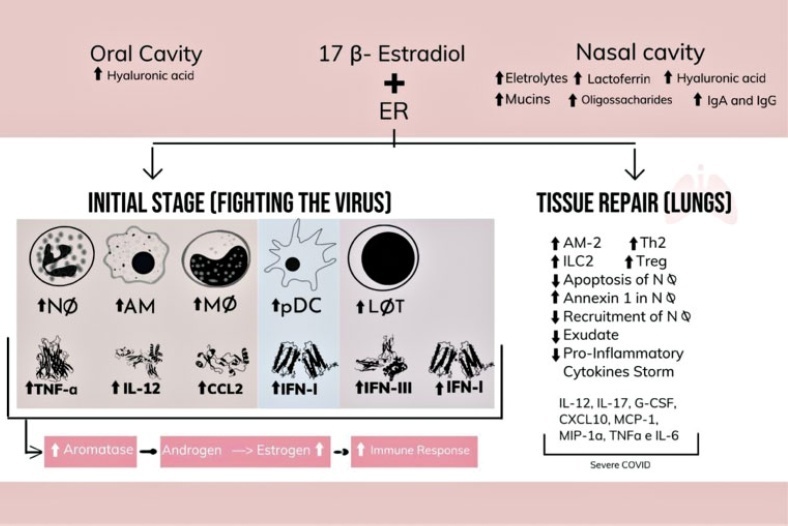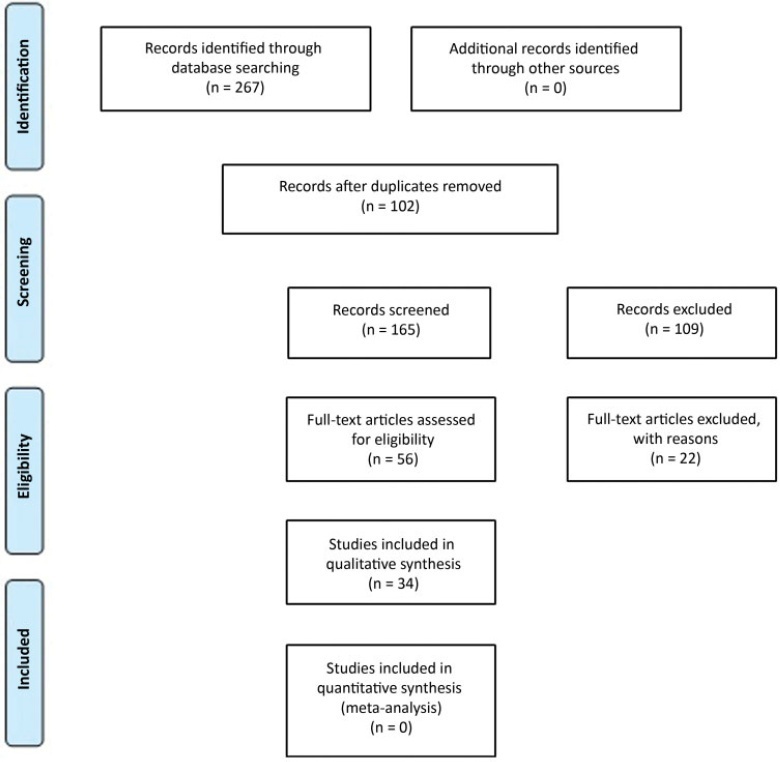-
Review Article02-17-2022
Effect of Surgical Treatment for Deep Infiltrating Endometriosis on Pelvic Floor Disorders: A Systematic Review with Meta-analysis
Revista Brasileira de Ginecologia e Obstetrícia. 2022;44(5):503-510
Abstract
Review ArticleEffect of Surgical Treatment for Deep Infiltrating Endometriosis on Pelvic Floor Disorders: A Systematic Review with Meta-analysis
Revista Brasileira de Ginecologia e Obstetrícia. 2022;44(5):503-510
Views264See moreAbstract
Objectives
To evaluate the impact of surgical treatment of deep infiltrative endometriosis (DIE) on pelvic floor dysfunction (urinary incontinence [UI], pelvic organ prolapse [POP], fecal incontinence [FI)] or constipation, and sexual function [dyspareunia]).
Data Source
The present systematic review was performed in the PubMed database. For the selection of studies, articles should be published by January 5, 2021, without language restriction.
Study Selection
Six randomized controlled studies that evaluated surgical treatment for DIE and the comparison of different surgical techniques were included.
Data Collection
The studies were selected independently by title and abstract by two authors. Disagreements were resolved by a third author. All included studies were also evaluated according to the Cochrane risk of bias tool and the quality of the evidence was analyzed using the GRADE criteria. Subgroup analysis by different treatments and follow-up periods was also performed.
Results
Six studies were included in the quantitative analysis. The risk of bias between studies showed an uncertain risk of bias for most studies, with concealment of allocation being the least reported category. The quality of the evidence was considered low. High heterogeneity was found between the studies. No study has evaluated UI or POP comparatively before and after surgery.
Conclusion
Dyspareunia and FI have improved after the surgical procedure, but it was not possible to demonstratewhich surgical technique was related to these outcomes as there was surgical heterogeneity. This diversity was found across data, with the recommendation of future prospective studies addressing pelvic floor disorders withDIE.
-
Review Article02-09-2022
Risks and Benefits of Breastfeeding in COVID-19: Integrative Literature Review
Revista Brasileira de Ginecologia e Obstetrícia. 2022;44(5):532-539
Abstract
Review ArticleRisks and Benefits of Breastfeeding in COVID-19: Integrative Literature Review
Revista Brasileira de Ginecologia e Obstetrícia. 2022;44(5):532-539
Views228Abstract
Objective
The present article seeks to consolidate existing knowledge on breastfeeding during the SARS-CoV-2 pandemic.
Data source
Articles from 2020 and 2021 collected from the PubMed, CAPES, Virtual Health Library, Google Scholar, SciELO, and UpToDate databases were analyzed. Books and government documents published in the last decade (2010-2020) were also consulted.
Study Selection
Sixteen works were used in the present study. The date of publication and discussion of SARS-CoV-2 transmission through breastmilk were the inclusion criteria. Thus, articles containing repeated information or with no relevance to add to the production were excluded. Data collection comprised critical reading and synthesis of the main information obtained on the subject, which were performed for the preparation of the present study. The research took place in the period from March 27 to April 2, 2021.
Synthesis of the data
Breast milk has diverse benefits for both the nursing mother and the infant. The presence of viral RNA by real-time polymerase chain reaction (RTPCR) in milk from disease-positive mothers has been detected in a few cases, and infant infections in these conditions suggest oral transmission of maternal or third-party origin. The virulence of the novel coronavirus in human milk is not confirmed, while significant amounts of exclusive antibodies are.
Conclusion
Lactation in the context of COVID-19 has shown greater benefits than risks of vertical transmission. Therefore, it should be encouraged when possible.
Key-words BreastfeedingCOVID-19immunologySARS-CoV-2 infectionvertical infectious disease transmissionSee more -
Review Article02-09-2022
Prevalence of Preeclampsia in Brazil: An Integrative Review
Revista Brasileira de Ginecologia e Obstetrícia. 2022;44(7):686-691
Abstract
Review ArticlePrevalence of Preeclampsia in Brazil: An Integrative Review
Revista Brasileira de Ginecologia e Obstetrícia. 2022;44(7):686-691
Views383See moreAbstract
Objective
To review literature and estimate the occurrence of preeclampsia and its complications in Brazil.
Methods
We performed an integrative review of the literature, and included observational studies published until August 2021 on the SciELO and PubMed databases that evaluated preeclampsia among pregnant women in Brazil. Other variables of interests were maternal death, neonatal death, hemolysis, elevated liver enzymes, and low platelet count (HELLP) syndrome, and eclampsia. Three independent reviewers evaluated all retrieved studies and selected those that met inclusion criteria. A metanalysis of the prevalence of preeclampsia and eclampsia was also performed, to estimate a pooled frequency of those conditions among the studies included.
Results
We retrieved 304 studies after the initial search; of those, 10 were included in the final analysis, with a total of 52,986 women considered. The pooled prevalence of preeclampsia was of 6.7%, with a total of 2,988 cases reported. The frequency of eclampsia ranged from 1.7% to 6.2%, while the occurrence of HELLP syndrome was underreported. Prematurity associated to hypertensive disorders ranged from 0.5% to 1.72%.
Conclusion
The frequency of preeclampsia was similar to that reported in other international studies, and it is increasing in Brazil, probably due to the adoption of new diagnostic criteria. The development of a national surveillance network would be essential to understand the problem of hypertensive disorders of pregnancy in Brazil.
-
Review Article02-09-2022
Main Complications during Pregnancy and Recommendations for Adequate Antenatal Care in Sickle Cell Disease: A Literature Review
Revista Brasileira de Ginecologia e Obstetrícia. 2022;44(6):593-601
Abstract
Review ArticleMain Complications during Pregnancy and Recommendations for Adequate Antenatal Care in Sickle Cell Disease: A Literature Review
Revista Brasileira de Ginecologia e Obstetrícia. 2022;44(6):593-601
Views356See moreAbstract
Sickle cell disease (SCD) is the most common monogenic disease worldwide, with a variable prevalence in each continent. A single nucleotide substitution leads to an amino-acid change in the β-globin chain, altering the normal structure of hemoglobin, which is then called hemoglobin S inherited in homozygosity (HbSS) or double heterozygosity (HbSC, HbSβ), and leads to chronic hemolysis, vaso-occlusion, inflammation, and endothelium activation. Pregnant women with SCD are at a higher risk of developing maternal and perinatal complications. We performed a narrative review of the literature considering SCD and pregnancy, the main clinical and obstetrical complications, the specific antenatal care, and the follow-up for maternal and fetal surveillance. Pregnant women with SCD are at a higher risk of developing clinical and obstetric complications such as pain episodes, pulmonary complications, infections, thromboembolic events, preeclampsia, and maternal death. Their newborns are also at an increased risk of developing neonatal complications: fetal growth restriction, preterm birth, stillbirth. Severe complications can occur in patients of any genotype. We concluded that SCD is a high-risk condition that increases maternal and perinatal morbidity and mortality. A multidisciplinary approach during pregnancy and the postpartum period is key to adequately diagnose and treat complications.
-
Review Article02-02-2022
Use of Corticosteroids in Prenatal Treatment of Congenital Pulmonary Adenomatoid Malformation: Integrative Review
Revista Brasileira de Ginecologia e Obstetrícia. 2022;44(3):304-310
Abstract
Review ArticleUse of Corticosteroids in Prenatal Treatment of Congenital Pulmonary Adenomatoid Malformation: Integrative Review
Revista Brasileira de Ginecologia e Obstetrícia. 2022;44(3):304-310
Views169Abstract
Objective
To review data on the use of corticosteroids for the treatment of fetuses with high-risk congenital pulmonary adenomatoid malformation (CPAM).
Methods
Integrative review based on the literature available onMEDLINE and LILACS, including articles published until November, 2020.
Results
The initial search resulted in 87 articles, 4 of which were selected for analysis, with all of them being retrospective descriptive observational studies. In the group of fetuses that received only a single corticosteroid cycle, the hydrops resolution rate was 70%, and the survival rate was 83.8%. In fetuses treated with 2 or more cycles of corticosteroids, there was an improvement in the condition of hydrops or edema in a single body compartment in 47%, and survival of 81.8% of the fetuses.
Conclusion
The use of corticosteroids for the prenatal treatment of high-risk CPAM appears to be associated with an improvement in perinatal outcomes.
Key-words Betamethasonecongenital pulmonary adenomatoid malformationcorticosteroidFetal treatmenthydropsSee more -
Review Article01-31-2022
Health of the Newborn and Breastfeeding during the COVID-19 Pandemic: A Literature Review
Revista Brasileira de Ginecologia e Obstetrícia. 2022;44(3):311-318
Abstract
Review ArticleHealth of the Newborn and Breastfeeding during the COVID-19 Pandemic: A Literature Review
Revista Brasileira de Ginecologia e Obstetrícia. 2022;44(3):311-318
Views270See moreAbstract
Objective
The present article presents a literature review concerning the microbiota of breast milk and the influence of epigenetics in the susceptibility to COVID-19.
Methods
A literature review.
Results
Breastfeeding transfers microbiota, nutrients, diverse white blood cells, prebiotics, hormones, and antibodies to the baby, which provide short- and longterm immunological protection against several infectious, gastrointestinal, and respiratory illnesses. The little evidence available shows that breast milk very rarely carries the SARS-CoV-2 virus, and even in those cases, it has been discarded as the source of contagion.
Conclusion
The reviewed studies show evidence of a beneficial effect of breastfeeding and highlights its importance on the current pandemic due to the immune reinforcement that it provides. Breastfed individuals showed better clinical response due to the influence on the microbiota and to the nutritional and immune contribution provided by breast milk, compared with those who were not breastfed.
-
Review Article01-24-2021
Analysis of the Role of Female Hormones During Infection by COVID-19
Revista Brasileira de Ginecologia e Obstetrícia. 2021;43(12):940-948
Abstract
Review ArticleAnalysis of the Role of Female Hormones During Infection by COVID-19
Revista Brasileira de Ginecologia e Obstetrícia. 2021;43(12):940-948
Views152See moreAbstract
Women have metabolic, immunological, and genetic variables that ensure more protection from coronavirus infection. However, the indication of treatment for several pathologies and contraception is determined by hormones that have adverse effects and raise doubts about their use during the COVID-19 pandemic. Therefore, the present study searches women specificities and the relation between female sexual hormones and COVID-19, and reports the main recommendations in this background. To this end, a review of the literature was conducted in the main databases, auxiliary data sources, and official websites. Therefore, considering the hypercoagulability status of COVID-19, the debate about the use of contraceptives due to the relative risk of thromboembolic effects that they impose arises. However, the current available evidence, as well as the recommendations of main health organs around the world, demonstrate that the use of hormonal contraceptives must be maintained during the pandemic.

-
Review Article01-24-2021
Clinical and Obstetric Aspects of Pregnant Women with COVID-19: A Systematic Review
Revista Brasileira de Ginecologia e Obstetrícia. 2021;43(12):949-960
Abstract
Review ArticleClinical and Obstetric Aspects of Pregnant Women with COVID-19: A Systematic Review
Revista Brasileira de Ginecologia e Obstetrícia. 2021;43(12):949-960
Views237See moreAbstract
Objective
To analyze the clinical and obstetric aspects of pregnant women with COVID-19.
Methods
A systematic literature review in the MEDLINE/PubMed, LILACS, SCIELO, and CNKI databases was performed from March to May 2020, with the descriptors: Pregnancy; 2019-nCov; Coronavirus; SARS-Cov-2, Covid-19. Of those chosen were original titles, without language and period restriction and that addressed pregnant women with a clinical and/or laboratory diagnosis of COVID-19. Revisions, editorials, and duplicate titles were excluded. The Newcastle-Ottawa (NOS) and Murad et al. scales were used to assess the quality of the studies.
Results
We included 34 articles with 412 pregnant women infected with severe acute respiratory syndrome (SARS-Cov-2), with an average age of 27.5 years of age and 36.0 gestational weeks. The most common symptom was fever (205 [49.7%]), and 89 (21.6%) pregnant women progressed to severe viral pneumonia. Laboratory tests showed an increase in C-reactive protein (154 [37.8%]), and radiological tests showed pneumonia with peripheral ground-glass pattern (172 [51.4%]). Emergency cesarean delivery was indicated for most pregnant women, and the most common gestational complication was premature rupture of ovarian membranes (14 [3.4%;]). We detected 2 (0.5%) neonatal deaths, 2 (0.5%) stillbirths, and 1 (0.2%) maternal death.
Conclusion
Pregnant women with COVID-19 presented a clinical picture similar to that of non-infected pregnant women, with few obstetric or neonatal repercussions. There was a greater indication of cesarean deliveries before the disease aggravated, and there was no evidence of vertical transmission of the infection.



